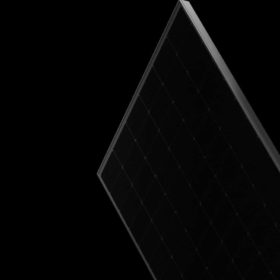Longi unveils n-type, TOPCon bifacial module with 22.3% efficiency

The 144-cell module is available in six versions with power ratings ranging from 545 W to 570 W and efficiency of between 21.3% and 22.3%. The product measures 2,256×1,133x35mm and weighs in at 32.3kg.
Chinese module maker Longi has unveiled its new Hi-MO N during the 15th International Photovoltaic Electricity Generation and Smart Energy Conference & Exhibition (SNEC 2021) currently being held in Shanghai, China.
The manufacturer describes the new product as the first bifacial module with n-type tunnel oxide passivated contact (TOPCon) solar cells.
The module is built with 144 half-cut cells is available in six versions with power ratings ranging from 545 W to 570 W and efficiencies between 21.3% and 22.3%.
The open-circuit voltage is between 50.85 V and 51.60 V and the short-circuit current ranges from 13.46 A to 13.81 A. The product measures 2,256×1,133x35mm and weighs in at 32.3kg. The maximum system voltage is 1,500 V.
It also features an IP68 enclosure rating, 2mm coated tempered glass, and an anodized aluminum alloy frame. The module can be used with operating temperatures of between -40 degrees Celsius and 85 degrees Celsius and its operating temperature coefficient is -0.31% per degree Celsius.
The panel comes with a 30-year linear power output guarantee and a 12-year product guarantee. The degradation in the first year is claimed to be less than 1% and power output is guaranteed to be no less than 87.40% of the nominal output power after 30 years.
“Hi-MO N maintains the optimal 182mm cell and 72-cell module size,” the company said in a statement released.
The new panel is based on its proprietary high-performance computing (HPC) technique and is claimed to provide higher bifacial gain, better temperature coefficient and low irradiance performance, lower working temperature, better light-induced degradation (LID) and potential induced degradation (PID) performance. “Energy yield is 2-3% higher than that of mainstream P-type bifacial modules,” Longi affirmed.

